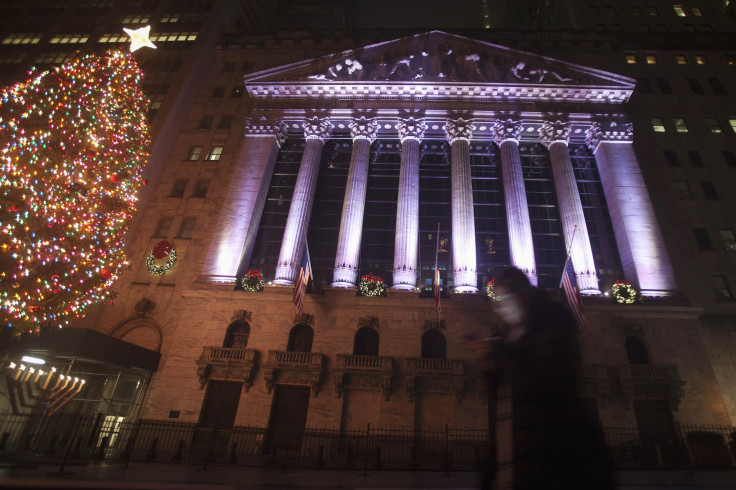Dow Jones Industrial Average, S&P 500 Index And Russell 2000 Index Smash Record Highs

U.S. stocks rallied for the seventh straight session Friday, with the Dow Jones Industrial Average and S&P 500 Index closing at record highs, as Wall Street continued to break records during a quiet day of trading following the Christmas Day holiday. With the New Year just around the corner, the “Santa Claus Rally” continued with full force as the blue-chip Dow recorded a new record high for the 38th time this year, while the S&P 500 tallied its 52nd record close of 2014.
The Dow, which measures the share prices of 30 large industrial companies, climbed 23.50 points, or 0.13 percent, to close at a record high of 18,053.71; the S&P 500 stock index gained 6.89 points, or 0.33 percent, to finish at a record-closing high of 2,088.77. The tech-heavy Nasdaq Composite added 33.39 points, or 0.70 percent, to 4,806.86.
The legend of the “Santa Claus Rally” in the U.S. stock market typically means the equity market will see a pop in trading that begins on the day after Christmas, and carries through the first few days of the year, according to Stephen Guilfoyle, chief economist at Sarge986.com. “Does this really happen? Yes, the majority of the time, it really does. Does the rally that we've already seen over the last couple of weeks make it difficult for it to happen this year? Quite possibly,” Guilfoyle said in a note Friday.
U.S. stocks capped off a record-breaking week after the Dow smashed the psychologically important 18,000 milestone Tuesday. But the Dow and the S&P 500 weren’t the only indices hitting new all-time highs. The Russell 2000 Index, which measures the performance of the small-cap segment of the U.S. equity market, also climbed to an all-time high Friday, gaining 8.40 points, or 0.7 percent, to a record finish at 1,215.19.
After bouncing back from five-year lows last week, global oil prices reversed and continued to decline this week, falling over 45 percent in the last six months. Brent crude, the global benchmark, fell 1.43 percent Friday to $59.38 a barrel, for Feb. 15 delivery, on the London ICE Futures Exchange. Meanwhile, West Texas Intermediate crude, the benchmark for U.S. oil prices, dropped more than 2 percent Friday to $54.73 per barrel, for Feb. 15 delivery, on the New York Mercantile Exchange.
Ahead on next week’s economic calendar, economists will sift through a series of housing and manufacturing data points, which market professionals expect to reveal the overall strength of the U.S. economy following Tuesday's blockbuster U.S. GDP report. The Case-Shiller home price index, which tracks changes in home prices throughout the U.S., is released Tuesday, along with the Conference Board’s Consumer Confidence Index. The National Association of Realtors will publish its Pending Home Sales Index Wednesday, a leading indicator of future existing home sales. The Chicago Purchasing Managers Index (PMI), a closely watched survey that tracks regional manufacturing activity, is issued Wednesday, ahead of Friday’s Institute of Supply Management Manufacturing Index, which monitors conditions in national manufacturing.
© Copyright IBTimes 2025. All rights reserved.






















